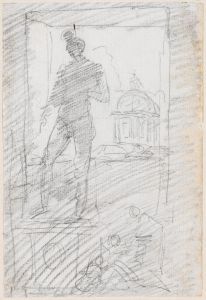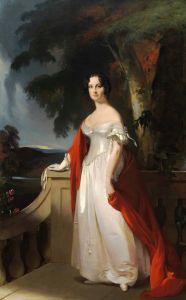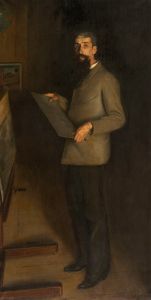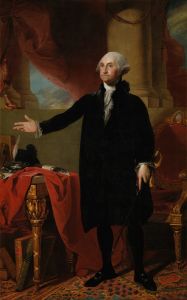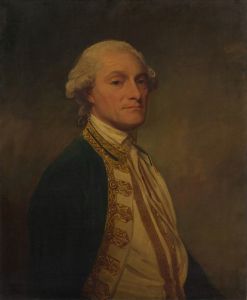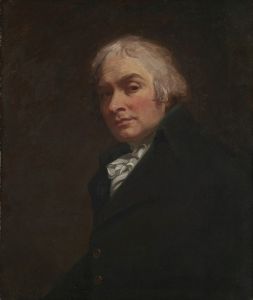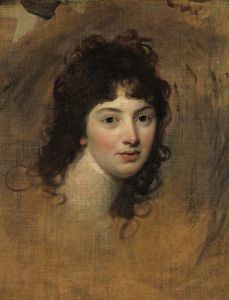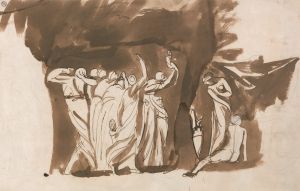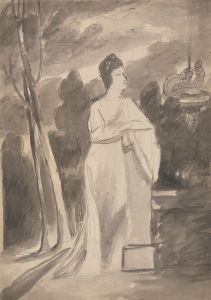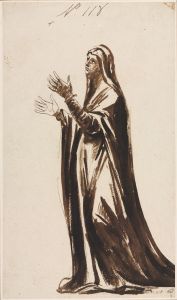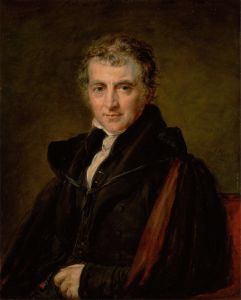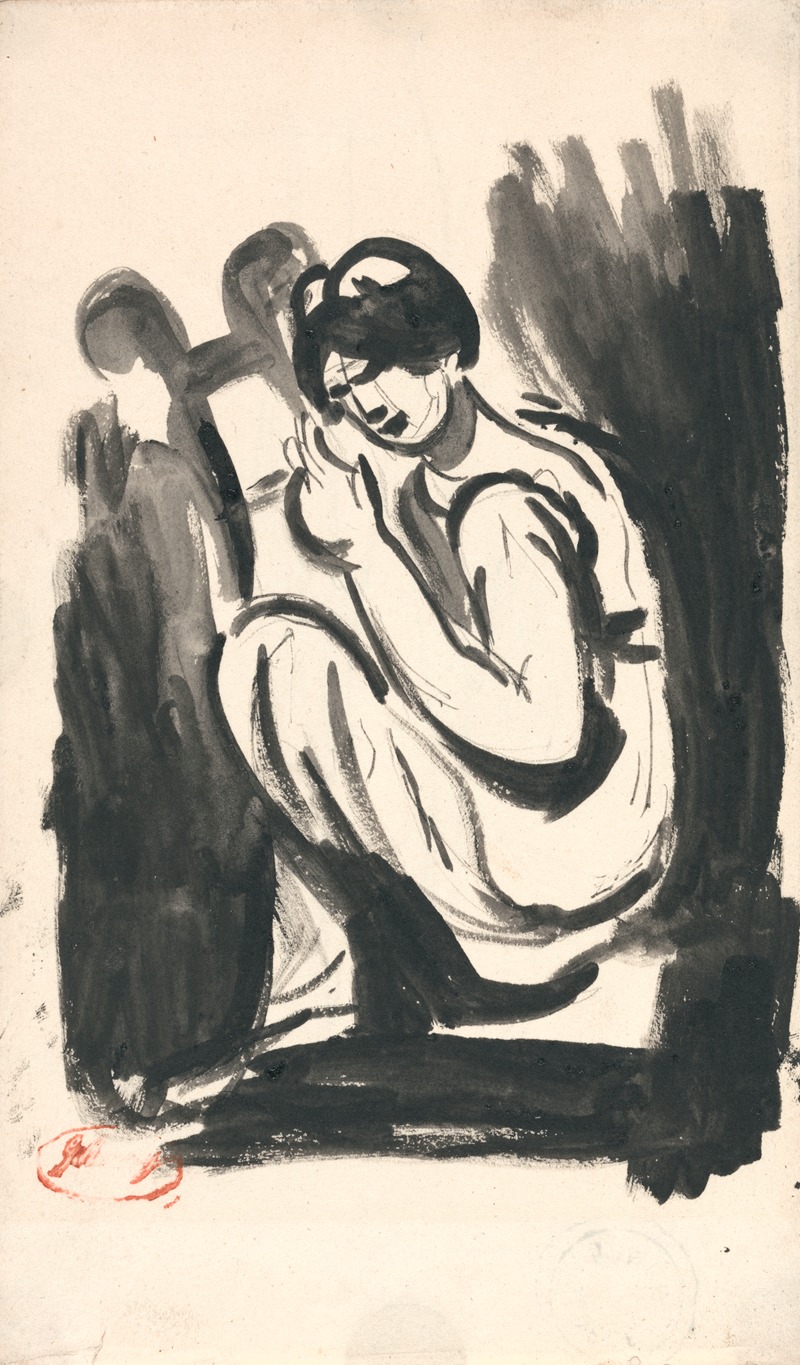
Seated Figure
A hand-painted replica of George Romney’s masterpiece Seated Figure, meticulously crafted by professional artists to capture the true essence of the original. Each piece is created with museum-quality canvas and rare mineral pigments, carefully painted by experienced artists with delicate brushstrokes and rich, layered colors to perfectly recreate the texture of the original artwork. Unlike machine-printed reproductions, this hand-painted version brings the painting to life, infused with the artist’s emotions and skill in every stroke. Whether for personal collection or home decoration, it instantly elevates the artistic atmosphere of any space.
"Seated Figure" is a painting by the renowned British artist George Romney, who was one of the leading portraitists of the late 18th century. Romney was born on December 26, 1734, in Dalton-in-Furness, Lancashire, England, and he became known for his elegant and expressive portraiture, which captured the personalities and social status of his sitters with great skill.
The painting "Seated Figure" exemplifies Romney's ability to convey a sense of grace and poise in his subjects. Although the exact date of the painting is not definitively known, it is believed to have been created during the height of Romney's career, which spanned from the 1770s to the early 1790s. This period was marked by his prolific output and the high demand for his portraits among the British aristocracy and upper-middle class.
In "Seated Figure," Romney employs his characteristic style, which combines a keen attention to detail with a soft, almost ethereal quality. The subject of the painting is depicted seated, with a relaxed yet dignified posture. The composition is balanced and harmonious, with the figure positioned slightly off-center to create a dynamic yet stable visual effect. The background is typically understated, allowing the viewer's focus to remain on the sitter.
Romney's use of light and shadow in "Seated Figure" is particularly noteworthy. He skillfully uses chiaroscuro to model the form of the figure, giving a sense of three-dimensionality and depth. The delicate handling of the fabric and the subtle variations in tone demonstrate Romney's technical proficiency and his sensitivity to the nuances of human expression.
The identity of the sitter in "Seated Figure" is not definitively known, which is not uncommon for many of Romney's works, as he painted numerous portraits of both well-known and lesser-known individuals. However, the painting's refined execution suggests that the sitter was likely a person of some social standing, as Romney's clientele often included members of the nobility, gentry, and influential figures of his time.
George Romney's contribution to the art world extends beyond his individual works. He was part of a broader movement in British art that sought to elevate portraiture to new heights, emphasizing not only the physical likeness of the sitter but also their character and inner life. His contemporaries included other prominent artists such as Sir Joshua Reynolds and Thomas Gainsborough, with whom he shared both rivalry and mutual respect.
Romney's legacy is preserved in numerous public and private collections, and his works continue to be studied and admired for their artistic merit and historical significance. "Seated Figure" remains a testament to his skill as a portraitist and his ability to capture the essence of his subjects with elegance and insight.
In summary, "Seated Figure" by George Romney is a fine example of 18th-century British portraiture, showcasing the artist's mastery of technique and his sensitivity to the subtleties of human expression. While the exact details of the painting's creation and the identity of the sitter may remain elusive, the work itself stands as a lasting tribute to Romney's talent and his contribution to the art of his time.





